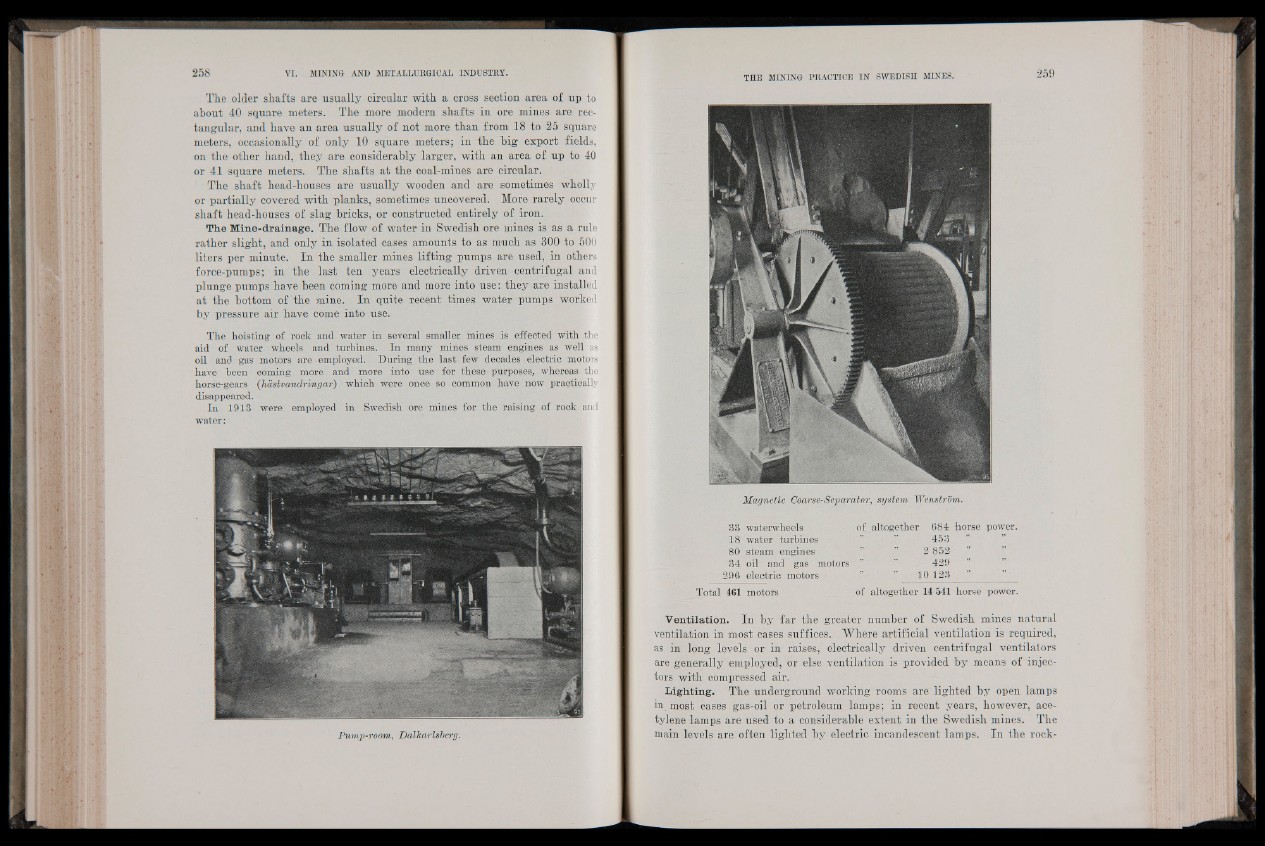
The older shafts are usually circular with a cross section area of up to
about 40 square meters. The more modem shafts in ore mines are rectangular,
and have an area usually of not more than from .18 to 25 square
meters, occasionally of only 1 0 square meters; in the big export fields,
on the other hand, they are considerably larger, with an area of up to 40
or 41 square meters. The shafts at the coal-mines are circular.
The shaft head-houses are usually wooden and are sometimes wholly
or partially covered with plants, sometimes uncovered. More rarely occur
shaft head-houses of slag bricks, or constructed entirely of iron.
The Mine-drainage. The flow of water in Swedish ore mines is as a rule
rather slight, and only in isolated cases amounts to as much as 300 to 500
liters per minute. In the smaller mines lifting pumps are used, in others
force-pumps; in the last ten years electrically driven centrifugal and
plunge pumps have been coming more and more into use: they are installed
at the bottom of the mine. In quite recent times water pumps worked
by pressure air have come into use.
The hoisting of rock and water in several smaller mines is effected with the
aid of water wheels and turbines. In many mines steam engines as well as
oil and gas motors are employed. During the last few decades electric motors
have been coming more and more into use for these purposes, whereas the
horse-gears Qiastvandringar) which were once so common have now practically
disappeared.
In 1913 were employed in Swedish ore mines for the raising of rock and
water:
Pump-room, Dalkarlsberg.
Magnetic Coarse-Separator, system Wenstrom.
33 waterwheels of_ altogether 684 horse power.
18 water turbines i ” ” 453
80 steam engines ” ” 2 852
34 oil' and gas motors ” 429
' 296 electric motors - ” . . 10 123
Total 461 motors _ of altogether 14 541 horse power.
Ventilation. In by far the greater number of Swedish mines natural
ventilation in most cases suffices. Where artificial ventilation is required,
as in long levels or in raises, electrically driven centrifugal ventilators
are generally employed, or else ventilation is provided by means of injectors
with compressed air.
Lighting. The underground working rooms are lighted by open lamps
in most oases gas-oil or petroleum lamps; in recent years, however, acetylene
lamps are used to a considerable extent in the Swedish mines. The
main levels are often lighted by electric incandescent lamps. In the rock-